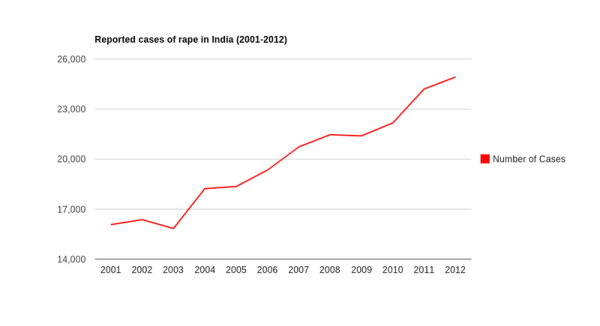Another gang rape in India, this time in a tribal area, a young woman is found in the company of a man from another village, moreover a Muslim; the village unofficial council imposes a hefty fine which the woman’s family cannot pay, so she gets gang raped by the men of the village, allegedly.
The family is warned not to go to the authorities but she’s bleeding heavily so she’s smuggled to a hospital two days later, police get involved, The Guardian newspaper sends a correspondent to get the story.
We can almost hear the sigh of anger and impotence from the women of the world, and most men too. How can this be possible? How can India enjoy a scientific and technological revolution, and still possess pockets of cultures firmly buried in anachronistic practices, from times when women were seen as inferior, or not quite human? Not that it’s an exclusively Indian problem.
Unfortunately the freedom and (almost) equality enjoyed today by many women around the world are not shared by everybody and examples of sexual violence continue to emerge just about everywhere. Whilst violations of human rights are always to be condemned, the specific case of sexual violence is a symptom of a much wider maladie that drags from generation to generation, from the family to society and submerges both men and women in the quagmire of dehumanisation.
There is already a general consensus that rape is not a sexual act but one of aggression. During wars women are raped to assert the power of the conquerors. Individual rapists tend to be so lacking in self esteem that they feel they can only assert their power over women in this brutal way. Torture in the form of rape and sexual humiliation have been favoured to deal with female victims, although not exclusively, and it is still happening.
Perhaps this episode is socially more difficult to understand, as apparently the whole village, men and women, participated in creating the conditions for this ‘punishment’. No mistake here, the men got permission to use their sexual organs as some form of weapon, to impose some form of ‘justice’. Their wives deny they did it; medical examinations seem to give support to the view that it all happened as described by the victim. If confirmed this event falls squarely into the torture remit, and no amount of ‘cultural relativity’ can justify “not getting involved in other people’s ways” when confronted with this level of violence. In Martin Luther King’s words, “Injustice anywhere is a threat to justice everywhere”.
Sorry about repeating myself
There are many places in the world, like the village in question, where people have very little access to education. But even where they do, an education specifically geared towards reducing violence, all forms of violence, which is the only thing that will prevent further violence towards women, is sadly absent from most curricula. Legal frameworks to deal with such crimes are necessary but their prevention value cannot be compared to mass education.
The understandable desire for self-defence of the Indian Women Red Brigades, would not have protected the young woman of this case. Training for those who wish to deliver many different forms of Education for Nonviolence is freely available online. Civil society can begin networking to achieve a high level of dissemination for this knowledge base, but ultimately only government-backed education can achieve the complete and homogeneous outreach this emergency demands.
Here are some links
Facebook Education for Nonviolence
World Without Wars and Violence
And WwW&V blog (worldwithoutwarsuk-at-googlemail.com) for ANVT: Active Nonviolence Training










